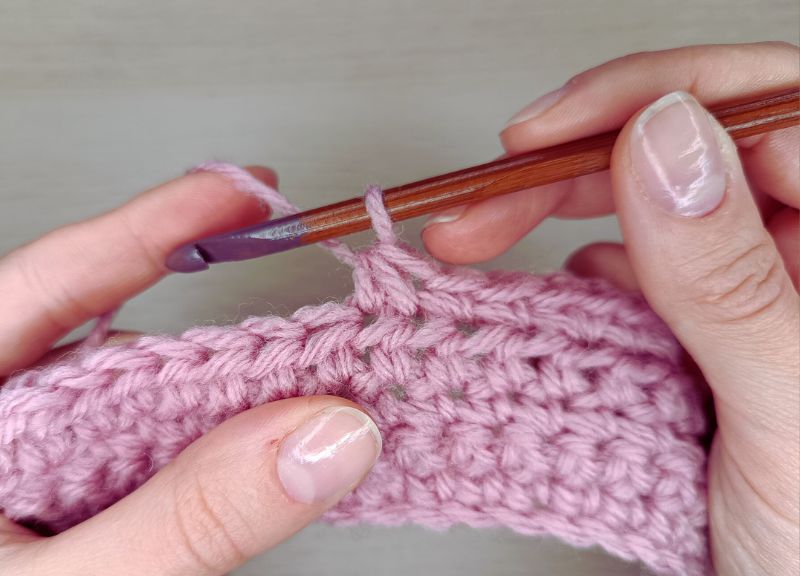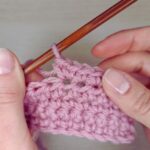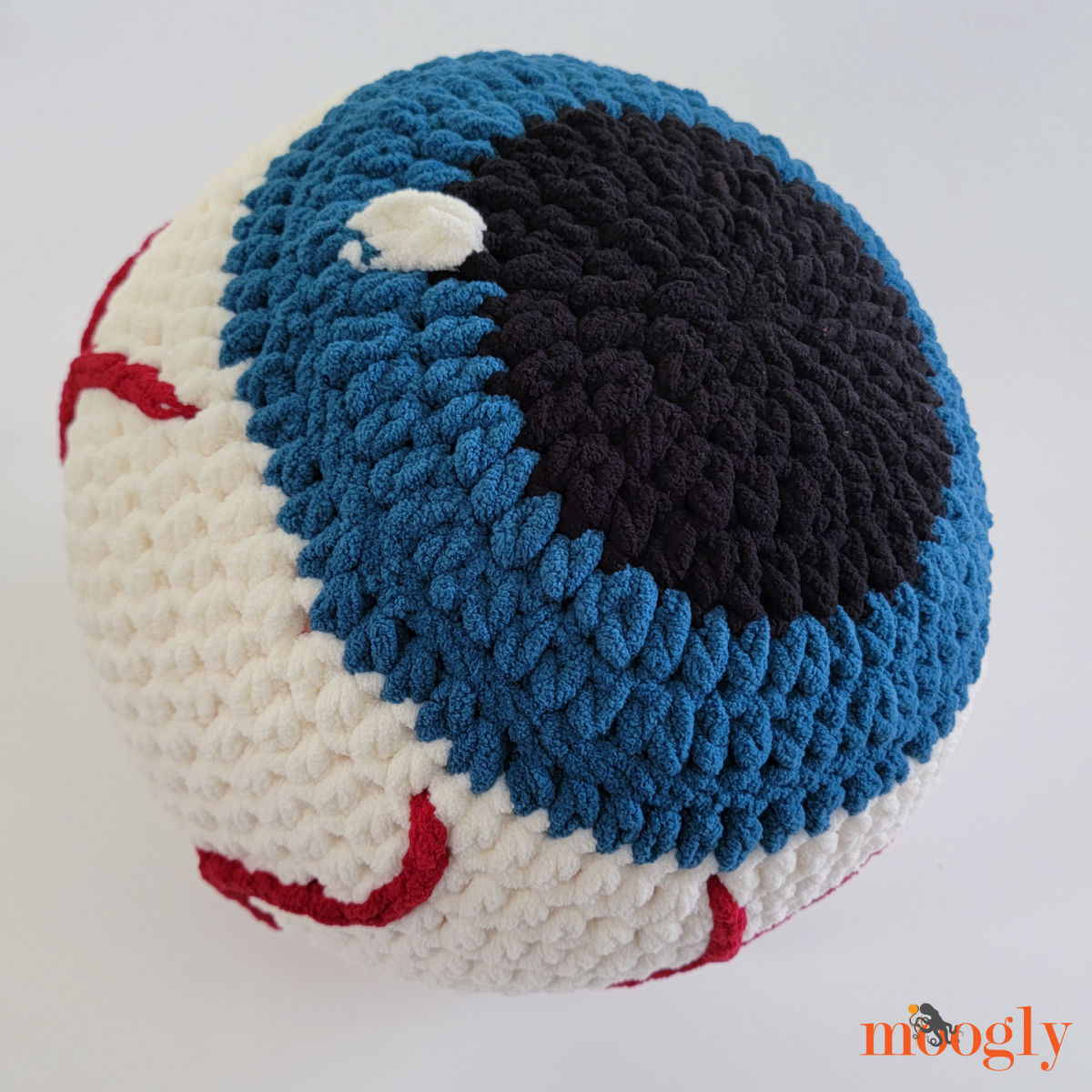What is Crocheting and How to Decrease Stitches?
When it comes to crochet, decreasing stitches is a fundamental technique that beginners must grasp. Crocheting involves creating fabric by interlocking loops of yarn using a crochet hook. Decreasing stitches in crochet is essential for shaping your projects, such as creating tapering edges or intricate designs.
To decrease in crochet means to eliminate stitches, thereby creating a smaller fabric area. To learn how to crochet basic stitches is crucial before diving into decrease techniques. Learning how to decrease in crochet properly will enhance your skills and allow you to tackle more advanced patterns with confidence.
Below, you will find a comprehensive video tutorial on how to make a decrease in single crochet, decrease in half double crochet (hdc2tog), decrease in double crochet, and decrease in treble crochet (tr2tog).
In the realm of crochet, mastering decrease techniques opens up a world of possibilities. Whether you are working on a simple dishcloth or an intricate amigurumi toy, knowing how to decrease will elevate the quality of your craft.
Understanding the basics of crochet
Beginning your crochet journey involves familiarizing yourself with the basic stitches such as single crochet, double crochet, and treble crochet. Each stitch plays a vital role in creating different textures and designs in your crochet projects. By looping yarn over a crochet hook and pulling it through loops on your hook, you can form intricate patterns and shapes.
Mastering the art of crochet requires patience and practice. Understanding the anatomy of crochet stitches, including loops, yarn overs, and the working yarn, is key to executing various techniques correctly. With dedication and determination, you can create beautiful crochet pieces to cherish or share with others.
As you progress in your crochet skills, experimenting with different yarn types and hook sizes will help you understand how they influence the overall look and feel of your projects. Don’t be afraid to make mistakes, as they often lead to valuable learning experiences in the world of crochet.
Step-by-step guide on decreasing stitches
Watch the easy video tutorial by YourCrochet.com to learn about the decrease in all types of crochet stitches. They are often used in various patterns.
To effectively decrease stitches in crochet, you need to identify where and how to make the decreases within a pattern. Decreasing typically involves working stitches together or skipping stitches to reduce the overall stitch count. By following clear instructions and practicing different decrease techniques, you will become more proficient in shaping your crochet projects.
Regular decrease stitches are commonly abbreviated as “dec” in crochet patterns, such as “sc dec.” Understanding these abbreviations and symbols is essential for successfully executing decrease stitches in your projects. As you practice decreasing, pay attention to the tension of your yarn to maintain consistent stitch sizes and achieve a neat finish in your work.
Moving beyond basic crochet stitches to incorporate decrease techniques allows you to create three-dimensional shapes and intricate lacework in your projects. Experiment with different decrease methods to discover which ones best suit your crochet style and project requirements. You might also like to know the crochet increase technique.
Single Crochet Decrease vs. Invisible Decrease: Which is Better?
When it comes to decreasing in crochet, two common techniques are the sc dec and the invisible decrease. The regular single crochet decrease involves working two stitches together to decrease the stitch count, creating a subtle decrease in the fabric. On the other hand, the invisible decrease technique produces a nearly seamless decrease, ideal for projects requiring a polished finish.
The single crochet decrease works by inserting your hook into the next stitch, pulling up a loop, and then repeating the process in the following stitch before completing the decrease. This technique creates a visible decrease in your work, perfect for shaping projects with clear stitch definitions.
The invisible decrease stitch is achieved by inserting the hook into the front loops of the next two stitches and then pulling the yarn through all loops on the hook to complete the decrease. This technique is favored for projects where maintaining a smooth, undetectable decrease is essential.
Mastering the single crochet decrease stitch
To execute the single crochet decrease stitch, begin by inserting your hook into the next stitch, yarn over, and pull up a loop. Leave two loops on your hook. Next, insert your hook into the following stitch, yarn over, and pull up a loop. You should now have three loops on your hook. Finally, yarn over and pull through all three loops to complete the decrease in single crochet.
As you practice the single decrease stitch crochet technique, pay attention to your tension to ensure consistent stitch sizes throughout your project. This decrease technique is commonly used in amigurumi and garment projects where shaping is required. By mastering this stitch, you can create precise decreases that maintain the integrity of your crochet work.
Experiment with different yarn types and hook sizes when practicing the sc decrease to observe how they influence the final look of your decreases. Understanding the impact of these variables will help you tailor your decrease techniques to suit various projects and achieve the desired results.
Secrets to perfecting the invisible decrease technique
The invisible decrease in crochet involves a slight modification in how you work stitches together to create a seamless decrease. To execute this technique, begin by inserting the hook only into the front loop of the next stitch. Without completing the stitch, insert your hook into the front loop of the following stitch, ensuring you have 2 loops on your hook. Yarn over and pull through both loops to complete the invisible decrease.
Practicing the invisible decrease crochet stitch will enhance your ability to create professional-looking decreases in your projects. This technique is especially useful when working on amigurumi, garments, or projects where visible decreases may affect the overall aesthetic. With patience and practice, you can seamlessly incorporate the invisible decrease into your crochet repertoire.
Take your time to perfect the tension and spacing of your invisible decreases to achieve a smooth and even fabric surface. As you become more comfortable with this technique, you’ll notice a significant improvement in the overall appearance of your crochet pieces, showcasing your attention to detail and precision in decrease stitches.
How to Decrease Stitches in Crochet Patterns
Deciphering decrease stitch patterns is crucial for successfully implementing decrease techniques in your crochet projects. Crochet patterns often include specific instructions on where and how to decrease stitches to achieve the desired shape or design. By familiarizing yourself with these patterns, you can confidently navigate through various decrease techniques.
When working on crochet patterns that involve decreasing, pay close attention to stitch counts and placement to ensure accurate shaping. Visualizing how each decrease stitch affects the overall pattern will help you anticipate the results and make adjustments as needed. Practicing decrease stitches regularly will improve your confidence in tackling intricate and challenging crochet projects.
Exploring different decrease stitch patterns allows you to expand your crochet skills and create versatile projects with unique textures and shapes. By incorporating decrease techniques creatively, you can add depth and dimension to your crochet pieces, elevating them from simple creations to intricate works of art.
Decoding decrease stitch patterns
Understanding the symbols and abbreviations used in crochet patterns is essential for interpreting decrease stitch instructions accurately. Look out for terms like “sc2tog” (single crochet two together) or “dec” to identify where decreases should be made in a pattern. By following these guidelines meticulously, you can achieve clean and precise decreases in your crochet work.
Practice deciphering decrease stitch patterns by working on small swatches or samples before incorporating them into larger projects. This hands-on approach allows you to familiarize yourself with various decrease techniques and gain confidence in implementing them effectively. Don’t hesitate to seek help from online tutorials or crochet communities when deciphering complex decrease stitch patterns.
As you become more adept at decoding decrease stitch patterns, you’ll develop a keen eye for recognizing patterns and structures within crochet designs. This skill will empower you to tackle advanced projects with ease and create stunning pieces that showcase your proficiency in using decrease techniques creatively.
Tips for practicing decrease stitches
When practicing decrease stitches in crochet, start with simple patterns or projects to build your confidence and understanding of the technique. Focus on maintaining a consistent tension throughout your work to ensure uniform decreases and a polished finish. Regular practice is key to learning how to do a decrease in crochet and incorporating them seamlessly into your projects.
Experiment with different yarn weights and textures when practicing decrease stitches to observe how they influence the drape and appearance of your crochet fabric. Adjusting your hook size can also impact the look of your decreases, allowing you to achieve varying degrees of tightness or looseness in your stitches. By exploring these variables, you can tailor your decreases to suit the specific requirements of each project.
Exploring Advanced Decrease Techniques: SC2tog and More
Delving into advanced decrease techniques in crochet opens up a world of creative possibilities for shaping your projects. The SC2tog (single crochet two together) stitch is a common decrease technique used in more complex patterns to reduce stitch counts efficiently. By mastering advanced decrease methods, you can achieve intricate designs and contour your crochet pieces with precision.
Unlocking the SC2tog stitch for decreasing involves working two single crochet stitches together, creating a seamless decrease in your fabric. This technique is ideal for shaping projects where maintaining stitch definition and structure is essential. By practicing the SC2tog stitch, you can enhance your ability to create professional-looking decreases in your crochet work.
Exploring other decrease stitch variations, such as double crochet decreases or half double crochet decreases, allows you to experiment with different textures and densities in your crochet projects. Each decrease technique offers unique characteristics that can be applied creatively to achieve varying effects in your work.
Unlocking the SC2tog stitch for decreasing
To execute the SC2tog stitch, begin by inserting a crochet hook into the first stitch, yarn over and pull up a loop. Repeat the process in the next stitch, leaving three loops on your hook. Yarn over and pull through all three loops to complete the SC2tog decrease. This technique effectively reduces stitch counts while maintaining a smooth transition between stitches.
Practicing the SC2tog stitch allows you to create intricate decreases in your crochet projects, enhancing the shaping and overall structure of your work. Experiment with different yarn colors or variegated yarn to highlight the texture and pattern created by the SC2tog decrease. With patience and persistence, you can incorporate this advanced decrease technique into a wide range of crochet projects.
As you become more adept at using the SC2tog stitch for decreasing, you’ll discover its versatility in shaping various crochet pieces, from garments to accessories. Embrace the challenge of mastering this advanced decrease technique. It opens doors to creating complex designs and intricate details in your crochet creations.
Diving into other decrease stitch variations
Aside from the SC2tog stitch, there are numerous other decrease stitch variations that you can explore to enhance your crochet skills. Experiment with techniques such as double crochet two together (dc2tog) or treble crochet decrease to create dynamic textures and shapes in your projects. Each variation offers a unique way of reducing stitch counts and shaping your crochet fabric. You will learn how to decrease in crocheting with single crochet, half double, double crochet, and treble crochet by watching the video tutorial on the top.
Diving into different decrease stitch variations allows you to broaden your crochet repertoire and tackle more challenging patterns with confidence. Practice incorporating these techniques into your projects to observe how they affect the overall structure and appearance of your crochet pieces. By mastering a variety of decrease stitches, you can elevate your crochet work to new levels of creativity and artistry.
Don’t shy away from experimenting with unconventional decrease stitch variations to add a touch of uniqueness to your crochet projects.
Common Mistakes in Decreasing Stitches: Troubleshooting Guide
While mastering decrease techniques is essential in crochet, it’s common to encounter mistakes along the way that may impact the overall quality of your projects. Understanding how to identify and rectify common decrease stitch errors is crucial for maintaining the integrity of your crochet work and achieving professional-looking results.
Avoiding mistakes when decreasing stitches requires attention to detail and precision in executing each decrease technique. Common errors include skipping stitches inadvertently, working decreases in the wrong sequence, or misjudging the placement of decrease stitches. By practicing mindfulness and focusing on the execution of decrease techniques, you can minimize the occurrence of errors in your crochet projects.
If you make mistakes in decreasing techniques, it’s essential to address them promptly to prevent them from affecting the rest of your project. Simple fixes, such as carefully unraveling the incorrect stitches and redoing the decrease correctly, can help rectify mistakes and maintain the overall quality of your crochet work.
Avoiding mistakes when decreasing stitches
To minimize errors, ensure that you follow pattern instructions carefully and double-check your work frequently to catch any mistakes early on. Pay attention to stitch counts and placements to avoid discrepancies that may result in misshapen projects. By staying vigilant and proactive in your approach to decreasing, you can prevent common mistakes and produce high-quality crochet pieces.
If you find yourself making mistakes while decreasing stitches, don’t be discouraged. Mistakes are a natural part of the learning process and offer valuable opportunities for growth and improvement. Take the time to analyze the cause of the error and make adjustments to your technique to prevent similar mistakes in future projects.
Seeking assistance from experienced crocheters or attending workshops on troubleshooting decrease techniques can provide valuable insights into common mistakes and their solutions. Embrace the learning curve associated with mastering decrease stitches, and remember that practice, patience, and perseverance are key to overcoming challenges in your crochet journey.
Fixing errors in decrease techniques
If you encounter errors while working on a crochet project, don’t panic. Assess the nature of the mistake: skipped stitches, incorrect decreases, or uneven tension, and strategize a plan to rectify it. Sometimes, unraveling a few rows can help correct major errors and resume your project with a clean slate.
Before proceeding with fixing errors in decrease techniques, take a moment to reevaluate your approach and ensure you understand where the mistake occurred. Seeking feedback from fellow crocheters or instructors can provide alternative perspectives on how to address specific decrease stitch errors effectively. Remember that mistakes are opportunities for growth and learning in your crochet practice.
Maintain a positive attitude and a willingness to learn from mistakes. You can enhance your crochet skills and develop a keen eye for identifying and correcting errors. Embrace the journey of troubleshooting decrease stitch mistakes as a valuable learning experience. It will ultimately contribute to your growth as a confident and skilled crocheter.
FAQ
What is an invisible single crochet decrease?
An invisible single crochet decrease is when 2 sc are decreased into 1 in a nearly undetectable manner. This creates a seamless look in the fabric.
How do I execute an invisible single crochet decrease?
To work a single crochet invisible decrease, insert the hook into the front loop of the first stitch, then into the front loop of the second stitch, yarn over and pull up a loop, yarn over again and pull through all loops on the hook.
What is the difference between a regular and an invisible single crochet decrease?
The main difference is that a regular single crochet decrease leaves a more noticeable ridge in the fabric. An invisible sc dec creates a smoother and less bulky decrease.
How can I decrease in crochet using the dc2tog and hdc2tog stitches?
To decrease in crochet using dc2tog (double crochet two together) or hdc2tog (half double crochet two together), you simply work the specified stitches together into one stitch. The video guide above demonstrates this!
When should I use decreases in crochet projects?
They are used to shape the fabric, create curves, or decrease the number of stitches in a row or round. They are commonly employed in shaping garments, amigurumi, and various other crochet projects.
Do I need to master increases and decreases in crochet?
Yes, learning how to increase and decrease in crochet is essential for creating well-shaped and complex projects. Understanding these techniques will help you achieve the desired dimensions and design in your crocheted pieces.
Crochet increase adds stitches to the row or round and decrease reduces. Both increases and decreases are used for shaping your makes.
Can I find tutorials on crochet stitches, including increases and decreases?
Sure! Here at PatternCenter, we have prepared many detailed tutorials on various crochet stitches, including increases and decreases. These resources can help beginners and experienced crocheters improve their skills.
What is the name for the crochet decrease technique where I need to take three loops on the hook?
The crochet decrease technique, where you take 3 loops on the hook, is called a three-together decrease or triple decrease. Depending on the stitch used, this technique is often abbreviated as “sc3tog” (single crochet three together) or “dc3tog” (double crochet three together).
How to do a sc3tog (Single Crochet Three Together):
- Insert the hook into the next stitch, yarn over (yo), and pull up a loop (two loops on the hook).
- Insert the hook into the next stitch, yarn over, and pull up a loop (three loops on the hook).
- Insert the hook into the next stitch, yarn over, and pull up a loop (four loops on the hook).
- Yarn over and pull through all four loops on the hook.
How to do a dc3tog (Double Crochet Three Together):
- Yarn over, insert the hook into the next stitch, yarn over, and pull up a loop (three loops on the hook).
- Yarn over and pull through two loops (two loops remain on the hook).
- Yarn over, insert the hook into the next stitch, yarn over, and pull up a loop (four loops on the hook).
- Yarn over and pull through two loops (three loops remain on the hook).
- Yarn over, insert the hook into the next stitch, yarn over, and pull up a loop (five loops on the hook).
- Yarn over and pull through two loops (four loops remain on the hook).
- Yarn over and pull through all four loops on the hook.
This decrease method is used to reduce the stitch count by two, creating a smooth and even decrease.






